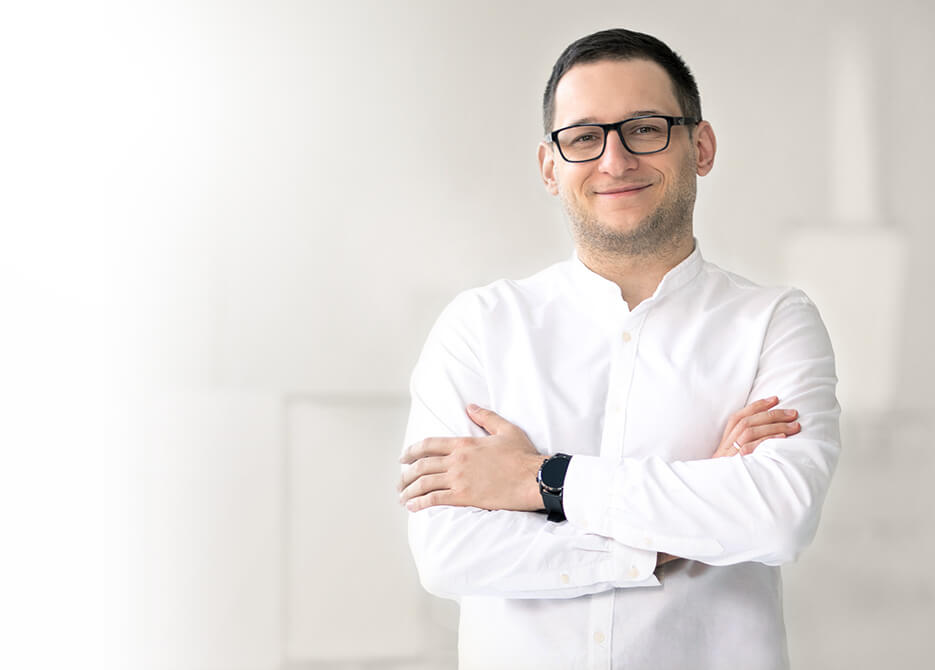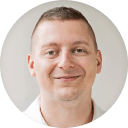How can I use an MVP to validate my startup idea?
Building an MVP is a great way to validate a startup idea and understand the needs and preferences of your target audience. By creating a bare-bones version of your product or service that contains only the essential features, you can get early feedback before devoting significant time and resources to building your final product.
If you work with an experienced development company, the MVP development process will be well-defined and seamlessly incorporate your early market research and user feedback into a minimum viable product you can launch into the market. Here are a few tips on how to use an MVP to validate a startup idea:
- Define your core value proposition. What is it that your product or service offers that is unique and valuable? This is the foundation of your MVP.
- Identify your target audience. Who do you think would be most interested in your product or service? These are the people you will need to reach with your MVP.
- Keep it simple. Remember, the goal of a minimum viable product is to test your concept and get user feedback, not to create a fully-fledged product. Don’t get too bogged down in details.
- Hire the right team. It can be difficult to build a successful MVP if you’re not working with an experienced team of software developers and industry experts. Make sure you thoroughly vet the team you’re working with to maximize your chances of success.
- Test, test, test. It’s important to get feedback from initial customers. Ask them what they think of your minimum viable product’s core features and usability. This should help you solidify how you proceed with further MVP development.
By following these tips, you can use an MVP to validate a startup idea and save your startup a lot of time and money in the long run.
Read More: 7 Most Inspiring Minimum Viable Product (MVP) Examples
What should I do before building an MVP?
Before building an MVP you need to have a clear objective. Your objective should be derived from a well-defined value proposition.
Your minimum viable product should be clearly aligned to the value proposition of your product. To be minimally viable, it needs to be valuable to your target market, right? This is where we get to the heart of ensuring we are building the right thing - not just a random set of features. Minimum viable products are always aligned to a well-defined value proposition.
But, what exactly is a value proposition?
A value proposition is a brief statement that outlines what your product or service can do for customers. It includes details on the problem the product or service solves for customers, its main benefit, and how it compares to other options in the market.
A value proposition should:
- Highlight the main benefits of your product or service for your target market. This is the heart of your value proposition.
- Detail the problem it solves for your target audience. Every viable product solves a real customer problem.
- Compare your product or service against others in the market. This should be based on real market research.
- Be agreed on by all major stakeholders in the company. It’s critical to have alignment on this foundational information.
- Be used as a jumping off point for marketing collateral, messaging, and your product’s tagline.
Before embarking on building a minimum viable product, you need to be really clear on what your value proposition is. This will set you up well to begin the formal MVP development process!
Read More: 7 Ways to Use AI to Build a Minimum Viable Product (MVP) Fast
What to choose proof of concept or MVP?
These two terms are very often confused! But, we’re here to clear this up because they are not the same thing!
A proof of concept is a demonstration of the feasibility of a particular software development project, business, or product idea. While not a required part of every product development project, this very early stage assessment of feasibility can help to reduce project risk and prevent investment in a project that lacks practicality or market demand.
A PoC can come in many forms, from a landing page or a marketing video to a crowdfunding campaign or ultra-basic physical prototype. The unifying idea is that a proof of concept should be low cost, quick to build, and require minimal development services.
A PoC is typically developed internally with a small group of people to help keep costs down. However sometimes a custom development company will be brought in to develop the proof of concept for a new startup that doesn’t have adequate resources internally.
Choosing to build a proof of concept might be right for you if:
- You’re in the very early stages of your project and have yet to validate basic feasibility.
- You want to test an idea out with the least effort and at the lowest cost before committing to it.
- You have a brand new type of product or service that is untested in the market.
Although originally coined by Frank Robinson in 2001, the term minimum viable product was brought to the mainstream by Eric Ries in his popular book “The Lean Startup” released in 2011. In short, a minimum viable product (MVP) is defined as a product with just enough features to be usable by real end-users.
Typically, a minimum viable product builds on the development work done during prototyping. The idea is to build a version of the product with all of the basic functionality, release it into the market and use real customer feedback to inform later versions of the product.
Teams who choose to build an MVP are able to embrace validated learning in the product development process. As you learn more about what the early adopters within your target audience like and don't like, what works and what doesn’t, you can adjust your product to better align to the market. Essentially, an MVP is one way to test business hypotheses directly in the market.
Choosing to build an MVP might be right for you if:
- You want to release the end product into the market rather than just use it for internal testing for further development.
- You want to test product market fit before investing further.
- You’ve already built a PoC or prototype to do basic product validation.
- You have ideas about the user flow of your product, but maybe not exactly what the essential features are.
Read More: PoC vs MVP - 12 Essential Pros & Cons You Need to Know
How to build a successful MVP?
Many teams jump straight into hiring a software development company, but successful MVP development must be preceded with a critical look at your product idea to ensure you're going to build an MVP that has real market value and will yield a high degree of customer satisfaction.
A good starting point for this is developing a statement that explains what benefit you provide for who and how you do it.
Step 1: Define the customer’s problem
A problem well stated is a problem half solved. If you don't know what problem your potential customers are trying to solve, you won't be able to build a product that meets their needs. By understanding the problem your customers are trying to solve, you can build a product with a user flow that is exactly what they need - nothing more and nothing less.
To get to the heart of your customers’ pain points, try asking these questions:
- What do you know about your end users’ goals?
- What pain points do your users have when trying to achieve their goals?
- In what ways are they trying to get their needs met already?
- What pain points affect measurable results such as revenue or efficiency?
- How urgent is the customer’s problem?
Step 2: Find a gap in the market
With your customer pain point in hand, it’s time to think more in depth about how the market is currently addressing (or attempting to address) this pain point. The reason this is so important is because your value proposition will be directly related to the other options customers have.
You need to understand what you’re up against and - ideally - find a gap in the market that you can fill when you build an MVP. To do this, we need to evaluate the competition by looking at the products that are already on the market and determine what your product will offer that is different or better. It can also be helpful to look at the pricing of similar products and decide where your product will fit in. Keep in mind:
Sometimes it’s about solving a customer pain point better or more directly.
Sometimes it’s about solving a customer pain point in a new or different way.
Sometimes it’s about solving a customer pain point at a lower cost.
Think about what your strategy is going to be. Your focus might be on solving the pain point more directly AND at a lower cost. Or - you may be solving a customer pain point in a new way that helps to reach a new segment of the market.
Step 3: Measure the gain/pain ratio
One of the most effective exercises for evaluating a value proposition is by measuring the gain/pain ratio, which compares the benefits obtained from using your idea versus the cost to switch to your solution.
Essentially, the gain/pain ratio is the ratio of the benefits of a proposed action to the costs or drawbacks of that action. It is used to help make decisions about whether to proceed with a particular course of action.
A high gain/pain ratio indicates that the benefits of the action are greater than the costs, while a low gain/pain ratio indicates that the costs are greater than the benefits. Some potential gains and pains include:
Step 4: Build the value proposition
At this point, you’ve deeply understood your customer’s pain points, found a suitable gap in the market, and measured your proposed solution using the gain/pain ratio. Now, it’s time to take your ideas and formulate a clear value proposition statement that will be at the heart of your MVP’s user flow.
A few tips as you develop your own value proposition statement:
- Use language that your customers use. This will help to ensure your message will truly resonate with customers when it’s translated into marketing collateral later.
- Don’t be afraid to test your value proposition in the market. Sometimes the best way to know if you have the right value proposition is to ask real customers before you build an MVP.
- Make sure all stakeholders are aligned. This statement will drive what you build and how you build it. Make sure everyone is in alignment before you move on.
Step 5: Find the simplest way to solve the problem
Now it’s time to work out how to build a minimum viable product using that value proposition statement. You may already have some ideas of what your product could look like, but before you get too far, we propose you focus on providing the simplest solution to your customer’s problem.
Far too often companies over-complicate or over-engineer a solution. They fall into the trap of “feature overload” - trying to add every possible feature a customer could want. But this only leads to a confusing product and expensive development costs. On the other hand, when you create a simple solution you see the following two major benefits:
- Reduced costs. Building a simple solution is going to be less complex and lower cost to build and maintain.
- Reduced time to market. Building a simple solution will help you prioritize only the must have features, which reduce overall development time.
- Increased customer satisfaction. Creating an easy to understand product with a singular compelling value proposition will certainly improve customer value and long term satisfaction.
So how do you avoid feature overload and build a minimum viable product that resonates with customers?
The short answer is: embrace the idea that your minimum viable product will not be your final product. You will add more features later. You will make changes and find ways to optimize your product. Don’t try to make your MVP perfect. In fact, if it is, you probably spent far too long in development!
Read More: Building a Minimum Viable Product in 5 Steps [+ Template]
What is Softkraft’s MVP development process?
1. Initial Discovery, Research & Estimation
We listen to understand what you want to build, what features your product should have, and what bottom-line results you want.
2. Workshops & Planning
The results-driven design thinking approach we use at SoftKraft is a catalyst for the iterative software product development process. It combines the best software product development methodologies. Get ready for an intense design workshop that will clarify your business idea and help us build a much better product.
3. Development Sprints
The development life-cycle is a structured and repetitive process that is divided into smaller parts - sprints. Each iteration covers a part of the project scope that is deliverable in a short and controllable period of time. Following agile methodology best practices, each sprint ends with a demo of a working part of the product, which opens user acceptance testing.
4. Stabilisation & Release Process
Developing software is a complex process that needs a stabilization phrase. During this stage, we focus on perfecting every area that makes the final product meet the business agility goals. When the stabilization stage is over and we have positive user feedback from the first users we can deploy the first version into the production environment
5. Support & Aftercare
After successful product development we can continue to provide support. We can monitor the performance and we are ready to fix all the issues based on the SLA or a different arrangement.
Depending on the client and project needs, we set the rules for support and technical improvements. We set the error handling rules, issues priorities, time of our reaction, and the amount of time of our developers that we should book monthly without sacrificing product quality.
Learn More: Software Product Development Services
How much does MVP development cost?
MVP product development costs come down to three major factors:
- Developers' experience
- Size and scope of the project
- Location of the developers
Generally speaking, developers with a few years of experience can cost anywhere from $50-$100 per hour. More experienced developers can cost $100-$200 per hour or more.
The size and scope of the project is another important factor to consider when budgeting for minimum viable product development services. A small, simple MVP might only take a few weeks to develop and can cost a few thousand dollars. A larger, more complex MVP can take several months to develop and can cost tens of thousands of dollars.
Finally, the location of the development company can also affect the cost. Developers in North America and Western Europe tend to be more expensive than developers in other parts of the world such as outsourcing to Eastern Europe. This is due to a number of factors, including the cost of living in these regions and the availability of experienced developers.
Overall, the cost of hiring developers for your minimum viable product software can vary depending on a number of factors. You should consider what your priorities are to ensure the MVP development team you select aligns with not just your budget but also your expectations for your end product.
Read More: 6 Steps to Find the Best MVP Developers for Your Startup Idea
How to choose MVP features for potential customers?
You may already have some ideas of what your product could look like, but you might not be sure what features are essential to include in your MVP. The reality is that your minimum viable product is just the first version of your product that customers will get their hands on. It should have all of the most essential features, but it doesn’t need to have all of the possible features - in fact, it shouldn’t.
So how do you figure out what these features should be?
It’s all about providing the simplest solution to your customer’s problem.
Far too often companies over-complicate or over-engineer a solution. They fall into the trap of “feature overload” - trying to add every possible feature potential customers could want. But this only leads to a confusing product and expensive development costs. On the other hand, when you create a simple solution you see the following two major benefits:
- Reduced costs. Building a simple solution with just the essential features to solve your customer’s main problem is going to be less complex and lower cost to build and maintain.
- Reduced time to market. Building a simple solution will help you prioritize only the must have MVP features, which reduce overall product development time.
- Increased customer satisfaction. Creating an easy to understand product with a singular compelling value proposition will certainly improve customer value and long term satisfaction.
To stay focused, embrace the idea that your minimum viable product will not be your final product. You will add more features later. You will make changes and find ways to optimize your product. Don’t try to make your MVP perfect. In fact, if it is, you probably spent far too long in development!
Here are a few tips to make sure you’re staying true to your value proposition statement and building the simplest solution with only he most essential features:
- Check your MVP feature set against your value proposition statement. Does anything not directly align? If so, cut it.
- Evaluate assumptions you are making about your target audience and potential customers. You might be building an MVP with features to satisfy assumptions that simply aren’t true.
- Make sure your core functionality isn’t getting buried in the noise. Your core features should be the star of the show. An overloaded feature set could be unintentionally hiding the main value you provide.
- Create a simple feature map. When in doubt, draw out the steps your potential customers would take on your site (i.e the user flow). Anything that gets in the way of a user achieving their main goal should be questioned.
Read More: Product Validation — 12 Ways to Test Your Product [with Examples]
What should I do after launching an MVP?
The MVP stage is over and now you’re ready to determine its success - and most importantly - decide what’s next for your newly launched product.
You can think of this as the testing stage or validation stage. The goal is to conduct thorough testing, measure the MVP’s success, and validate if you should invest in further development or not. While your focus may be on customer development post-launch, it’s important to pause and thoroughly assess if your business idea is worth further investment.
Here are a few areas you should look at as part of your post-launch assessment:
- Customer experience: What does the customer experience look like? What is your customer base (especially early adopters) saying about their experience using your product? Work with your full product team to understand what customers are saying.
- Feature set: What MVP features received positive feedback? Were there more basic features that customers really resonated with? On the contrary, were there “must have features” that actually turned out to be confusing or unused by your active users? Consider how you will adjust these for future product iterations.
- MVP development process: How smooth was the process working with your MVP development company? Do you want to keep working with them or consider other options for development of your final product?
- MVP development cost: How does the final MVP development cost compare to your expectations? Did you end up spending more than expected to build an MVP? If so, what adjustments do you need to make for future development?
Read More: The 8-Step Product Management Process [with Examples]






















![Building a Minimum Viable Product in 5 Steps [+ Template]](/uploads/blog/how-to-build-a-minimum-viable-product/how-to-build-a-minimum-viable-product.png)
![Product Validation — 12 Ways to Test Your Product [with Examples]](/uploads/blog/product-validation/product-validation.png)

